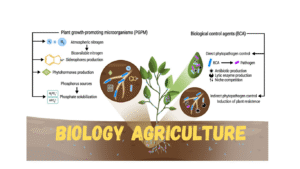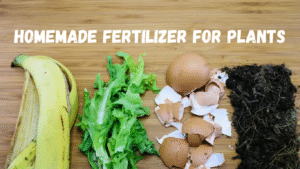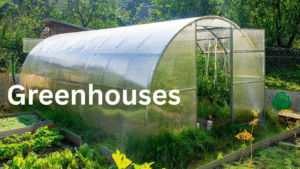CRISPR in Agriculture: How Gene Editing is Changing Our Farms
Let’s talk about something that might sound super scientific but is actually pretty fascinating once you break it down: CRISPR in agriculture. If you’ve ever heard that term thrown around on the news or in science shows, and thought, “That’s not for me,” well, think again. Because it actually is for you—and for all of us who eat, farm, or just care about the future of food.
So grab a cup of tea or coffee and let’s chat about how this tiny tool called CRISPR is quietly making big changes on farms around the world.
What Is CRISPR ?
Before we dive into how CRISPR is shaking up farming, let’s start with the basics: what exactly is it?

CRISPR (say it like crisper) is short for “Clustered Regularly Interspaced Short Palindromic Repeats.” Yeah, it’s a mouthful. But don’t get lost in the name—it’s actually a very simple and clever system borrowed from nature.
Think of it this way: if DNA is the instruction manual for a plant (or any living thing), CRISPR is like a pencil with an eraser. It lets scientists go in and edit the instructions—change a letter, fix a word, or even rewrite a sentence. Not the whole book—just a very specific part.
And that precision? That’s what makes it so powerful.
How CRISPR Actually Works
At the heart of CRISPR are two key players:
- Guide RNA (gRNA) – This is like a search engine. It scans the DNA for the exact spot that needs editing.
- Cas9 Protein – This is the tool that makes the cut—imagine a very sharp, very tiny pair of scissors.
Once the DNA is snipped at the right place, the cell’s natural repair process kicks in. That’s when scientists can jump in and say, “Hey, while you’re fixing this, let’s change this part,” or “Let’s delete that error.”
It’s incredibly precise. And fast. And efficient.
Why CRISPR Is a Big Deal in Agriculture
Now, why are scientists and farmers so excited about CRISPR? Here’s why it’s a breakthrough:
- Speed – Old school breeding takes years. CRISPR can bring results in a season or two.
- Cost – It doesn’t need super fancy equipment, so even smaller labs can use it.
- Accuracy – It targets only the gene that needs fixing, not the whole system.
- Versatility – You can use it on pretty much any crop: rice, corn, tomatoes—you name it.
In short, CRISPR lets us improve crops faster, cheaper, and more precisely than ever before.
Is It the Same as a GMO?
Here’s where it gets interesting. CRISPR edited plants aren’t always considered GMOs.
Traditional GMOs often involve adding a gene from one species into another—like taking a frost resistance gene from a fish and putting it in a tomato yes, that was a real experiment once. But CRISPR usually doesn’t add anything foreign. It just tweaks the genes already inside the plant.
It’s like fixing a typo rather than cutting and pasting a whole paragraph from a different book.
Because of that, countries like the U.S. don’t always regulate CRISPR edited crops as strictly as GMOs. Other regions, like the EU, are still debating how to handle it.
A Down-to-Earth Example
Let’s say you’re growing tomatoes, and they tend to rot quickly after harvest. With CRISPR, scientists can identify the gene responsible for that spoilage and adjust it—without messing with the rest of the tomato.
Or picture a banana that keeps catching a fungal disease. CRISPR could be used to “turn off” the gene that leaves it open to infection—like closing a window before a storm.
You’re not creating a new banana. You’re improving the one we already have.
Where Did CRISPR Come From?
Back in 2012, two scientists—Jennifer Doudna and Emmanuelle Charpentier—figured out how to adapt this natural bacterial defense system into a gene editing tool. Their work was so important, they won the Nobel Prize in Chemistry in 2020.
Since then, CRISPR has been used to:
- Make rice that grows better in dry conditions
- Create soybeans with healthier oil
- Develop corn that resists certain pests
- Edit tomatoes to last longer after picking
And research is still going strong. There’s work being done to help bananas fight disease, to grow coffee plants that can handle climate change, and even to make peanuts that are less likely to cause allergic reactions.
Why It Matters
CRISPR isn’t just science fiction or a lab trick. It’s already helping real farmers deal with real challenges—climate change, pests, poor soil, rising demand.
It is not about replacing nature. It’s about giving nature a little help.
In a world where we need to grow more food with fewer resources, CRISPR might just be one of the most useful tools we’ve ever had.
Why Agriculture?
You might be wondering, “Why mess with the genes of our crops?”
Good question. The answer is pretty practical. Farmers face a bunch of challenges:
- Droughts and floods
- Pests and diseases
- Poor soil
- Climate change
- The need to grow more food on less land
CRISPR can help with all of these. Instead of spending years trying to breed a crop that can handle a certain problem, scientists can use CRISPR to directly make the change in the plant’s genes.
Real-World Uses of CRISPR in Agriculture
When you hear the word “CRISPR,” you might think of high tech labs and white coats—not fields full of corn or baskets of tomatoes. But believe it or not, this gene editing tool is already out there, quietly helping farmers grow better crops with fewer problems. Let’s take a closer look at some real world examples of how CRISPR is being used in agriculture today—and why it matters for everyone, from the people who grow our food to those who eat it.

1. Tomatoes That Don’t Get Sick So Easily
Tomatoes look tough on the outside, but they’re surprisingly delicate. One good attack of tomato yellow leaf curl virus (TYLCV) or powdery mildew, and the whole crop can be wiped out.
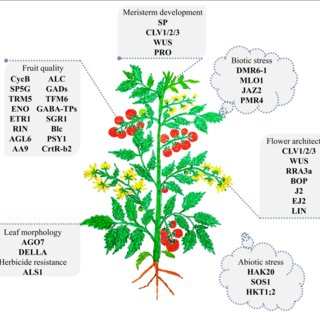
That’s where CRISPR comes in. Instead of spraying the plants with fungicides or hoping for the best, scientists found a way to edit a gene called SlMlo1, which is partly responsible for how sensitive the plant is to mildew. Once edited, the plants showed resistance—no extra chemicals needed.
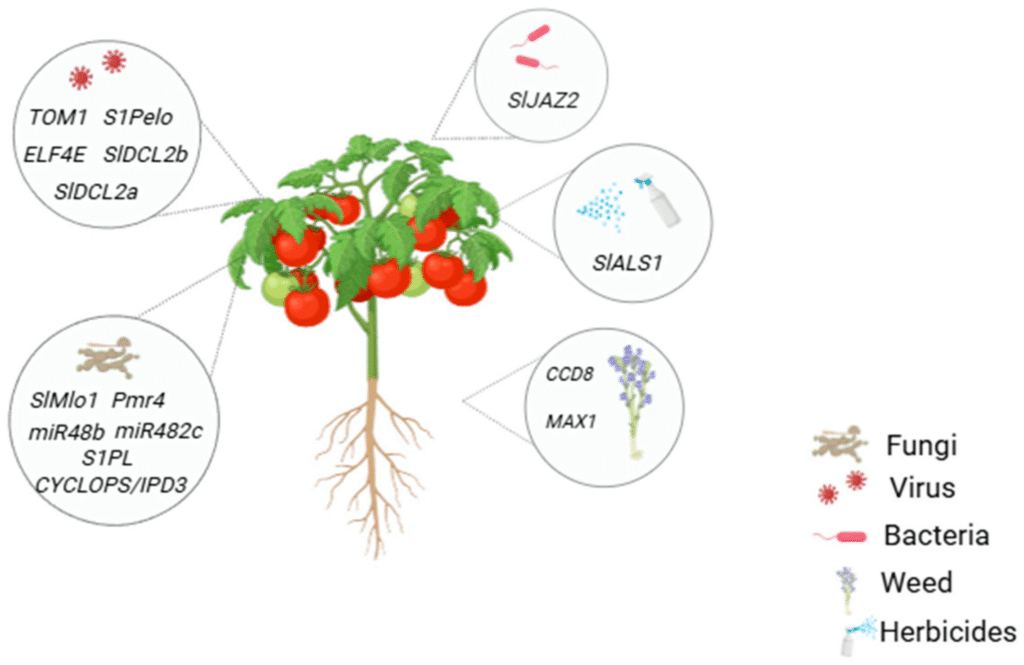
A study out of China in 2020 went even further: researchers used CRISPR to build in resistance to multiple viruses at once. One smart edit, and the tomatoes could handle a whole range of problems.
Why it matters: Farmers save money on chemicals, consumers get cleaner food, and fewer chemicals end up in the environment. That’s a win-win-win.
2. Maize That Stands Up to Drought
For millions of farmers—especially in dry parts of Africa and Asia—drought isn’t just a bad year. It can be devastating. And since maize is a staple food for many, crop failure can mean real hunger.
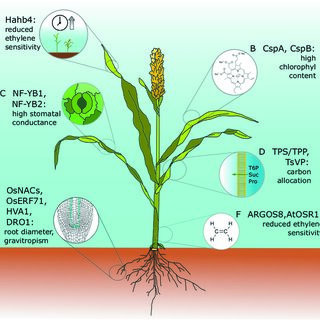
Using CRISPR, scientists looked at a gene called ARGOS8, which helps control how the plant responds to stress. By tweaking it, they created a version of maize that keeps growing strong even when water is scarce. In one trial, edited plants produced up to 15% more grain than regular ones during dry spells.
DuPont Pioneer now part of Corteva Agriscience led the charge on this back in 2016, and the potential for this technology is still growing.
Why it matters: More food, even in tough conditions. For small farmers, that could mean the difference between getting by or going under.
3. Mushrooms That Don’t Turn Brown Overnight
Ever open your fridge to find your mushrooms looking sad and spotty? It’s because of an enzyme called PPO (polyphenol oxidase), which causes browning when mushrooms are cut or bruised.
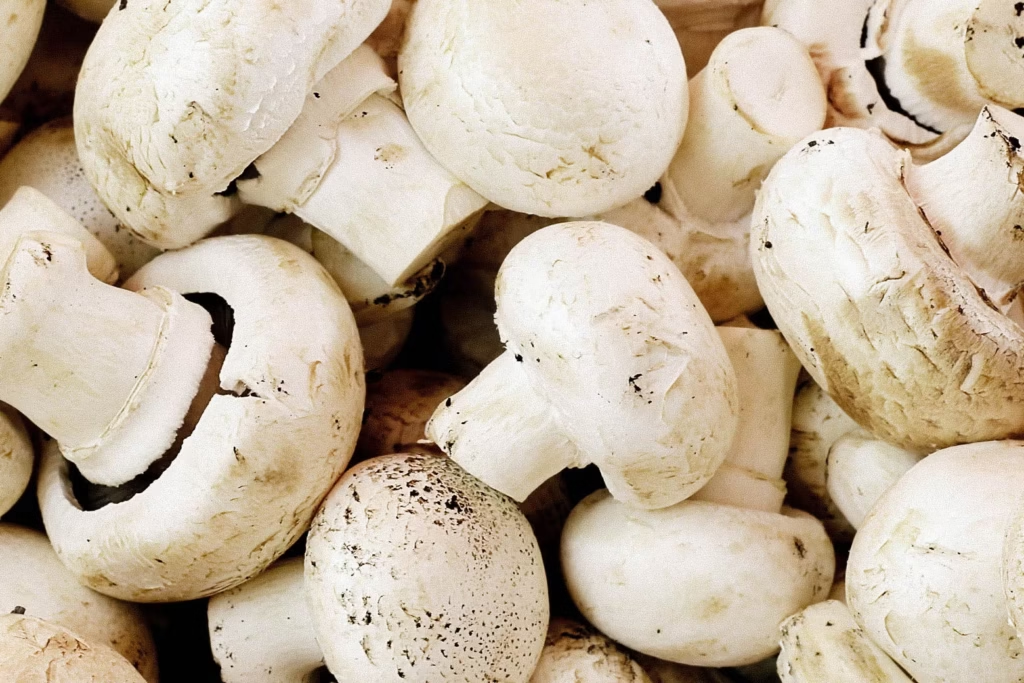
A team at Penn State figured out that by simply “turning off” one of the PPO genes using CRISPR, they could make mushrooms that stay white and fresh looking longer. No new genes added—just a smart little adjustment.
And here’s the kicker: because nothing foreign was inserted, the USDA didn’t even consider it a genetically modified organism (GMO). That decision opened the door to faster approval and fewer regulatory hoops.
Why it matters: Longer shelf life means less food waste. That’s good for grocery stores, good for your wallet, and good for the planet.
4. Rice That Can Handle Tougher Conditions
Rice feeds over half the world’s population. But rice farming is under pressure—from salty soils, hotter temperatures, and stubborn diseases like rice blast, which alone causes tens of billions in crop losses every year.
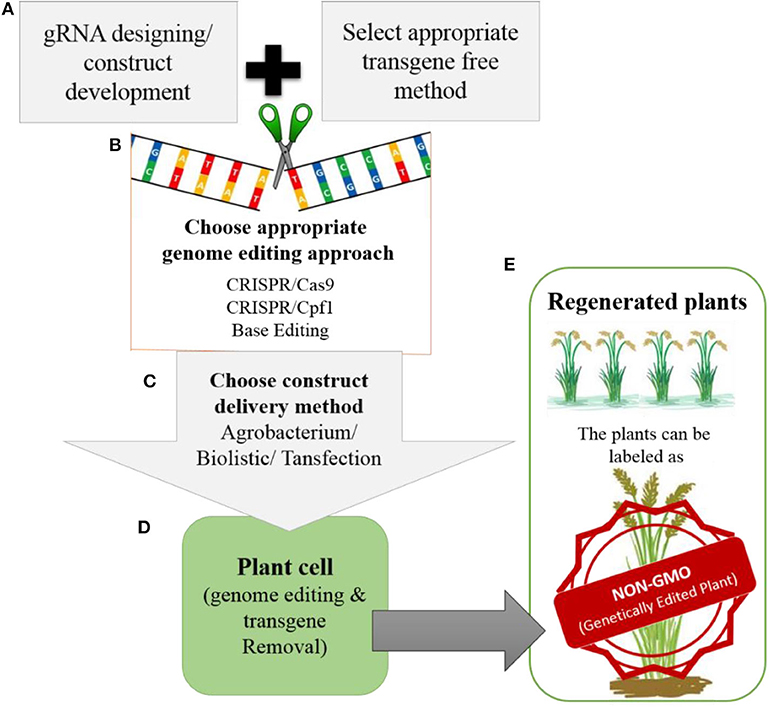
CRISPR is now helping scientists build rice varieties that can handle these challenges. For example:
- Editing OsRR22 helps the plant cope with salty soils.
- Removing a gene called Pi21 gives the plant resistance to rice blast disease.
- Tweaking nitrogen use genes helps rice grow well even with less fertilizer.
Researchers in Japan have led some of the breakthroughs here, including rice that resists blast fungus without sacrificing grain quality or yield.
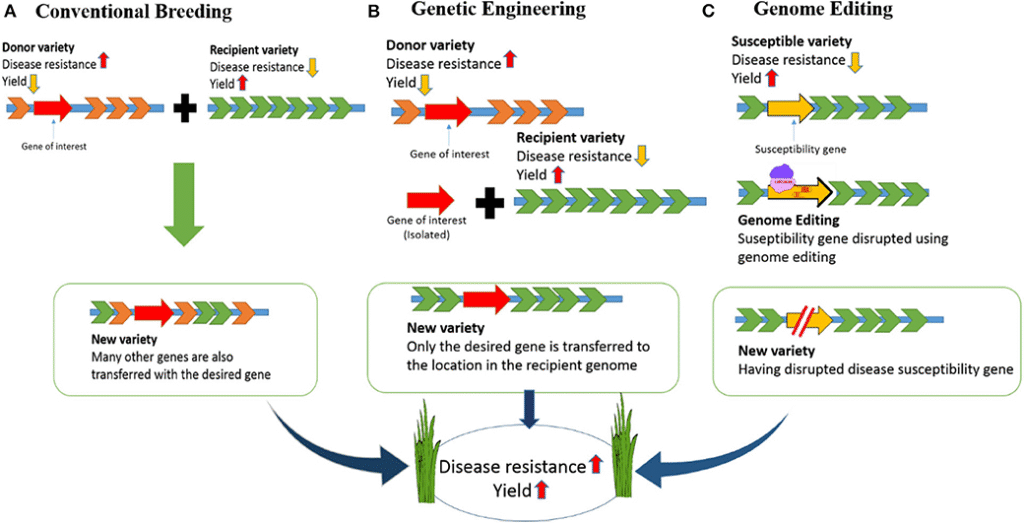
Why it matters: In places where climate change is making farming harder, these rice varieties could keep food on plates and reduce the need for expensive fertilizers or pesticides.
Bonus: Could Allergy Free Peanuts Be Coming?
This one’s still in the research phase, but it’s too exciting not to mention.
Peanut allergies affect millions of people, especially kids. Scientists are now using CRISPR to silence the genes (Ara h 1, 2, and 3) that trigger allergic reactions.
If they succeed, it could mean a future where kids can eat peanut butter without fear, and schools, airlines, and food manufacturers have one less thing to worry about.
Why it matters: It’s about safety, accessibility, and peace of mind for families everywhere.
The Process: How Gets Used CRISPR in Agriculture

Here’s a simplified step-by-step of how CRISPR is used on plants:
- Identify the Problem: Say the crop keeps getting a fungal infection.
- Find the Gene: Scientists figure out which gene is related to that problem.
- Design the CRISPR Tool: They build a guide RNA that matches that gene.
- Edit the DNA: The CRISPR system makes a cut in the plant’s DNA, and the cell naturally repairs it, often deleting or changing the gene.
- Grow and Test: The plant is grown and tested to see if the change worked.
It can take months or years depending on the crop, but it’s still way faster than traditional breeding.
CRISPR vs GMOs in Agriculture: What’s the Real Deal?
Let’s get one thing straight: this isn’t about glow in the dark strawberries or laser beam potatoes.
When people hear words like “GMO” or “CRISPR,” their heads often fill with sci-fi nonsense. But in reality? It’s about something much more down-to-earth: growing better crops with fewer problems. That’s it.
So, let’s strip away the jargon and talk about what’s actually going on in fields and labs around the world.
1. First Off, What Exactly Is a GMO?
“GMO” stands for Genetically Modified Organism.
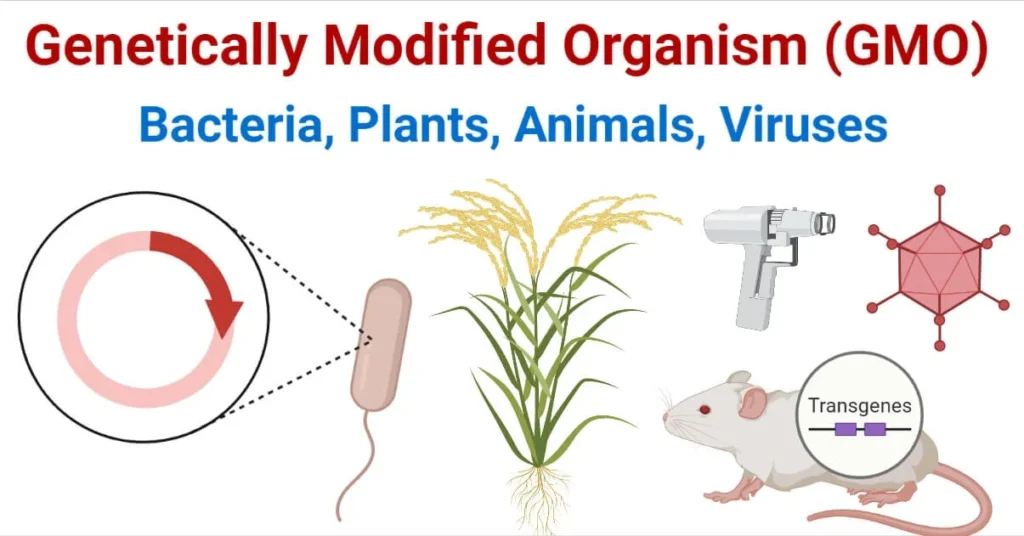
That means a plant or animal has had its DNA adjusted by scientists. But it’s not just random fiddling. They’re not tossing in frog DNA for fun. Usually, it’s done to help the plant do something useful—like fight off bugs or survive drought.
A Real-Life Example:
Let’s talk about Bt corn. Scientists found a helpful gene in a soil bacterium called Bacillus thuringiensis. They moved that gene into corn. Now, the corn can make a natural bug killing protein by itself.
In short: the corn tells the insects to back off—and they actually do.
But since this involves mixing genes between different species bacteria to plant, it makes some people nervous. These are called transgenic crops. Think of them like crop mashups.
2. So, What About CRISPR?
CRISPR is newer—and more precise.
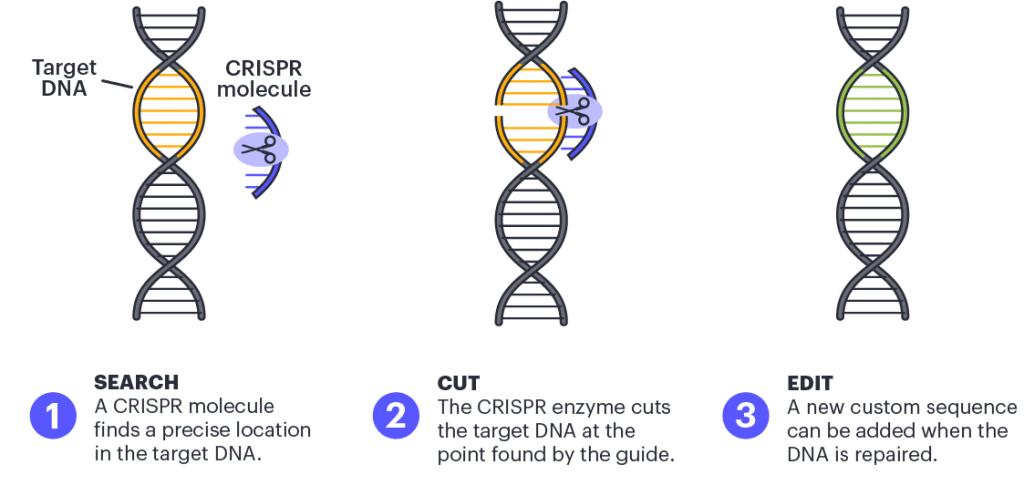
Instead of adding stuff from other species, CRISPR works with what the plant already has. It’s like editing a sentence in a notebook. You don’t stick in a paragraph from another book—you just fix a spelling error or delete a word.
Example:
Scientists used CRISPR on mushrooms to keep them from turning brown. No new genes were added. They just turned off the gene that causes browning.
That’s it. No sci-fi. Just science doing some housekeeping.
3. But What Do the Rules Say?
Here’s where things get messy.
In the U.S.: If CRISPR doesn’t add any foreign DNA, the plant usually isn’t labeled a GMO. So, that anti browning mushroom? It skipped most of the long government paperwork.
In the EU: They say, “A change is a change.” Even if you don’t add anything new, CRISPR is still treated like a GMO. So it gets the same strict rules and labeling.
Other countries (Brazil, Japan, Argentina, Australia): They’ve taken a middle road approach. If there’s no foreign DNA, they might not call it a GMO—but they still keep watch.
So yeah, the same tomato might be totally fine in Iowa but labeled a GMO in Italy. Welcome to global agriculture.
4. CRISPR = Old School Farming, Just on Fast Forward
Long before labs and microscopes, farmers were already tweaking crops.
How? By saving seeds from the best plants—toughest, tastiest, most bug proof. That’s called selective breeding, and it’s been going on for thousands of years.
CRISPR does the same thing—but way faster. Instead of spending decades breeding in a new trait, scientists can go into the plant’s DNA and fix the exact gene that’s causing trouble.
No guesswork. No hoping nature figures it out in 20 years.
Same plant, just less waiting.
5. Why Do People Feel So Differently?
Let’s be honest—“GMO” still gives some folks the creeps.
For some, it brings up worries about big corporations, mystery ingredients, or “Frankenfoods.” Even when the science checks out, feelings don’t always follow logic.
CRISPR feels a bit more natural to many people. No gene from a fish in your tomato. Just small edits, like what might’ve happened naturally over generations.
That said—no method is perfect. Careful testing and clear rules still matter. But many scientists argue we should judge a crop based on what it does, not how it was made.
6. CRISPR vs GMO: A Look at Real Crops
Here’s a no-nonsense table to show the difference:
| Crop | What It Does | How It Was Made | Foreign DNA? | US Labeling |
|---|---|---|---|---|
| Bt Corn | Kills pests | GMO (bacteria gene) | Yes | Labeled as GMO |
| CRISPR Tomato | Resists mildew | CRISPR edit | No | Not labeled GMO |
| Roundup Soy | Survives herbicide | GMO | Yes | Labeled as GMO |
| CRISPR Rice | Grows in salty soil | CRISPR edit | No | May skip GMO tag |
See the pattern?
Both aim for better crops. GMOs add outside genes. CRISPR just tweaks what’s already there.
7. Why This Actually Matters to You
You might be thinking, “Cool science stuff… but why should I care?”
Here’s why:
For Farmers:
CRISPR means faster fixes for big problems like drought, disease, or low yields. And since it often skips the GMO label, it saves years of legal hurdles.
For Shoppers:
These changes can mean longer lasting fruits, better flavor, and—hopefully—lower grocery bills.
For the Planet:
Crops that don’t need as much pesticide? That’s good for soil, water, and the bees. Crops that can handle salty or dry soil? That helps fight climate stress. Less waste, less damage.
CRISPR in Agriculture Benefits for Farmers and Consumers
CRISPR isn’t just about making life easier for scientists. Here’s how it helps people on the ground:
For Farmers:
- Reduced pesticide use saves money and protects health.
- More reliable harvests less risk from drought or disease
- Higher yields
- Less waste
For Consumers:
- Longer lasting produce
- Improved nutrition scientists can boost vitamin content
- More sustainable food system
Challenges and Concerns OF CRISPR in Agriculture
Of course, it’s not all smooth sailing. CRISPR in agriculture comes with its share of worries:
1. Regulations Vary
Some countries welcome CRISPR crops. Others are still debating. Without clear rules, it’s hard for farmers to adopt the technology widely.
2. Access for Small Farmers
Right now, much of the CRISPR work is being done by big companies or major universities. Will small scale farmers in developing countries be able to benefit? That’s a big question.
3. Unintended Effects
Editing one gene could sometimes have side effects. Scientists try to test for this, but it’s something to watch out for.
4. Public Trust
Some people are still skeptical about anything involving gene editing. Clear communication and transparency will be key.
The Future of CRISPR in Agriculture
So where are we headed?
Let’s just say your salad is about to get smarter. CRISPR is moving fast from the lab bench to the grocery shelf, and it’s reshaping how we grow, eat, and think about food.
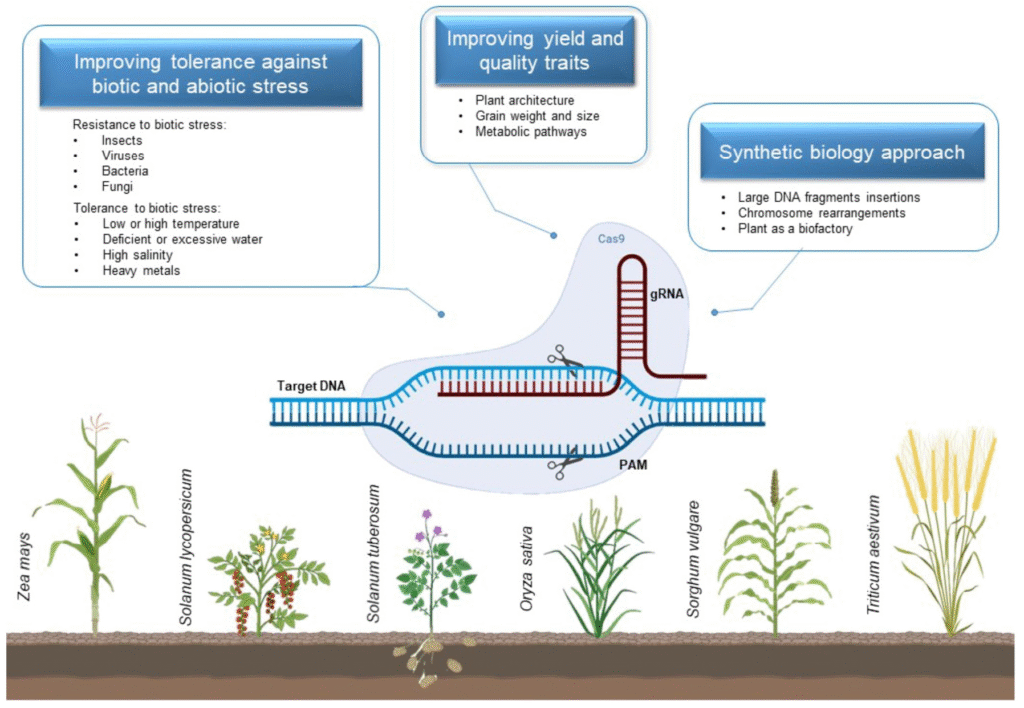
Here’s what’s on the horizon—and why it matters.
1. More CRISPR Edited Fruits and Vegetables on Store Shelves
This isn’t a sci-fi teaser—it’s already happening.
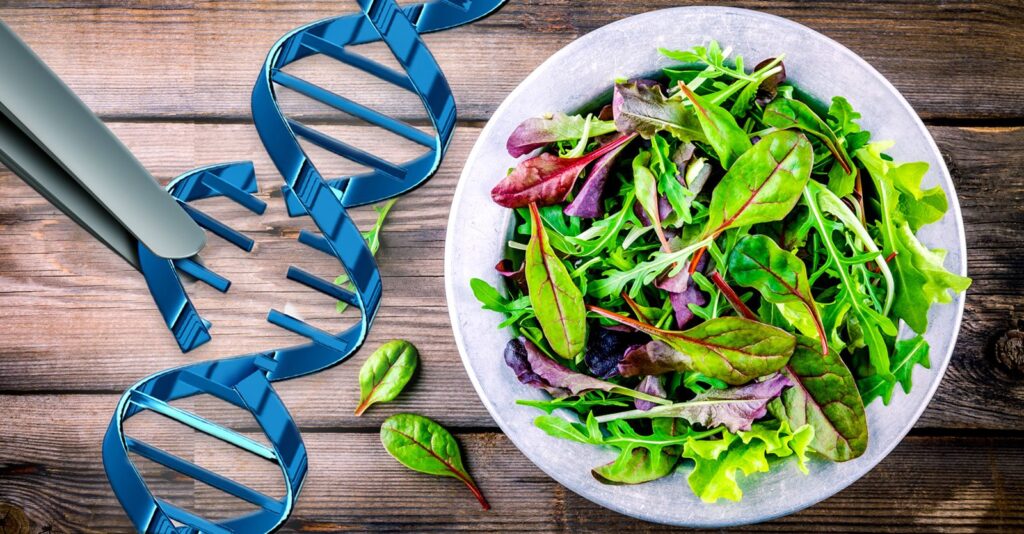
In 2021, a Japanese startup called Sanatech Seed released a CRISPR edited tomato with five times more GABA, a compound linked to reducing blood pressure. And yes, it’s already on sale—no GMO label needed.
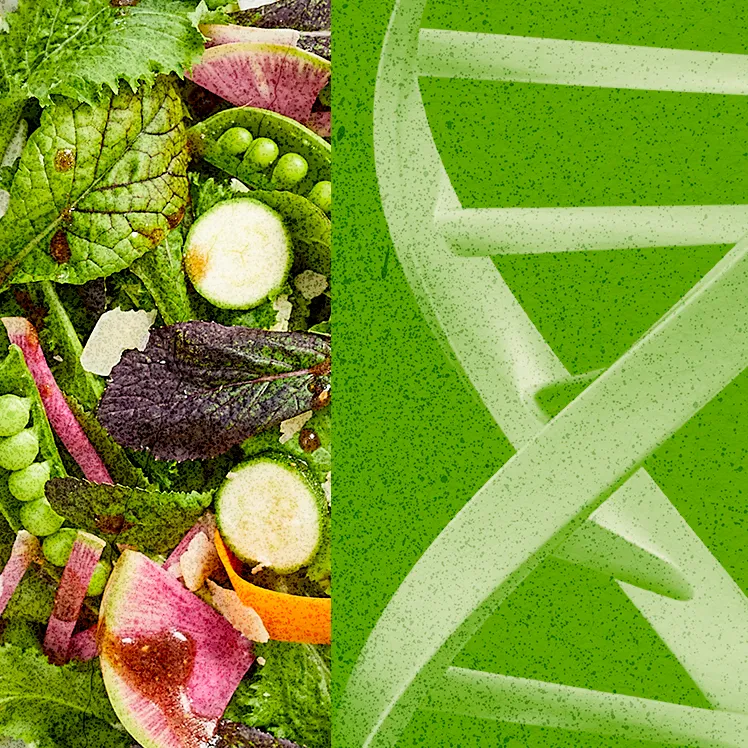
Meanwhile, U.S. company Pairwise developed seedless blackberries and pitless cherries using CRISPR. These aren’t just cute snack hacks—they’re major wins for reducing food waste and improving shelf life.
Research Insight: A 2023 review in Frontiers in Genome Editing noted over 30 CRISPR edited produce types in pipeline globally—including lettuce, strawberries, bananas, and even kale—designed for better nutrition, taste, and resistance to spoilage.
2. Crops That Need Fewer Chemical Inputs
One big goal with CRISPR? Make plants that don’t need as much help to stay alive.
Think fewer pesticides, less fertilizer, and a smaller environmental footprint.
In India, scientists used CRISPR to create a mustard plant resistant to fungal pathogens. That means farmers can skip costly fungicides—and bees and soils breathe easier.
In the U.S., researchers at the University of Missouri tweaked soybeans to reduce reliance on herbicides like glyphosate—by enhancing the plant’s own stress response and weed competitiveness.
Real Data: According to a 2022 study in Nature Biotechnology, CRISPR edits in maize, rice, and soy could reduce chemical usage by 25–50% over the next decade, especially in pest prone tropical regions.
3. Plants That Can Thrive in Tough Conditions
Climate change isn’t waiting around, and neither are plant scientists.
In the Philippines, researchers are developing CRISPR rice varieties that tolerate saline water, which is a growing issue in coastal farmlands.
In Ethiopia and Kenya, trials are underway for CRISPR edited teff (a key grain) that resists drought while maintaining yield. These crops aren’t about record harvests—they’re about survival where rainfall has become unpredictable.
Fact Check: The International Rice Research Institute (IRRI) reports that CRISPR edited salt tolerant rice can survive in soils with double the salinity levels of traditional varieties—with no yield loss.
4. A Bigger Role in Fighting Climate Change
CRISPR can’t fix the climate crisis alone, but it’s playing a smart supporting role.
Imagine crops that grow faster, store more carbon in the soil, and resist disease without harsh chemicals. That’s not just efficient—that’s climate smart farming.
One powerful example is nitrogen efficient wheat and barley. By editing genes that regulate how plants absorb and use nitrogen, scientists hope to slash fertilizer use—one of agriculture’s biggest greenhouse gas offenders.
Meanwhile, CRISPR is being explored to boost photosynthesis efficiency in rice and corn. More photosynthesis = more carbon pulled from the air = healthier yields with less land.
Research Spotlight: A 2023 study in PNAS showed that boosting a single CRISPR edited gene (SBPase) in rice increased carbon fixation rates by 15%, improving both growth and drought tolerance.
5. It’s Not Just More Food—It’s Healthier Food
This part is easy to overlook, but it matters just as much.
CRISPR is also being used to enhance the nutritional value of food crops:
- CRISPR Bananas are being developed with higher levels of pro vitamin A to combat childhood blindness in parts of Africa.
- CRISPR Wheat in Argentina is being tweaked to have lower gluten levels, helping people with non celiac gluten sensitivity.
- CRISPR Rice is being tested for increased iron and zinc content—key nutrients lacking in millions of people’s diets.
Quick Stat: According to the FAO, more than 2 billion people suffer from micronutrient deficiencies. CRISPR could help fix that, crop by crop, without making the food look or taste different.
What’s Next?
CRISPR’s story in agriculture is just beginning. We’re talking about more than just tech here—this is a food system reset. The real breakthroughs ahead might include:
- CRISPR edited legumes that fix nitrogen better and reduce fertilizer needs.
- Disease proof bananas to save the Cavendish from Panama disease.
- Tree crops like cacao and coffee edited to survive changing climates.
And here’s the real kicker: most CRISPR crops won’t wear the “GMO” label, depending on where they’re grown. That could open the door to faster adoption—and faster results.
Should You Be Concerned?
If you’re worried about CRISPR food, you’re not alone. But most scientists agree that when done properly, it’s safe. It doesn’t introduce foreign DNA, and it’s much more targeted than old school GMO methods.
Still, it’s okay to ask questions. Here are a few to consider:
- Are these crops tested well?
- Are farmers benefiting fairly?
- Are we protecting biodiversity?
Staying informed is the best thing any of us can do.
Summary Table for CRISPR in Agriculture :
| Aspect | Details |
|---|---|
| Definition | CRISPR (Clustered Regularly Interspaced Short Palindromic Repeats) is a gene editing tool that allows scientists to precisely modify plant DNA. |
| Main Purpose | Improve crop yield, resistance to pests/diseases, and adaptability to climate change. |
| Key Benefits | Faster breeding, reduced pesticide use, improved nutritional content, and enhanced climate resilience. |
| Applications | Creating drought tolerant crops, pest resistant plants, higher nutrient produce, and disease free varieties. |
| Examples | Wheat resistant to powdery mildew, tomatoes with longer shelf life, rice with enhanced yield. |
| Advantages Over Traditional Breeding | More precise, quicker results, avoids random mutations common in conventional breeding. |
| Ethical Concerns | GMO labeling debates, potential biodiversity impacts, and public acceptance issues. |
| Regulatory Status | Varies by country — some treat CRISPR edited plants like traditional crops, others regulate as GMOs. |
| Future Potential | Developing climate smart crops, improving food security, and reducing agriculture’s environmental footprint. |
Wrapping It All Up
CRISPR in agriculture isn’t just a trend—it’s a shift in how we grow food. It offers huge potential to make farming more sustainable, productive, and responsive to the changing climate.
But it also comes with big responsibilities. Farmers, scientists, companies, and all of us as eaters have a role to play in making sure this powerful tool is used wisely.
It’s not about choosing between technology and tradition. It’s about using the best tools we have to feed the world in a fair and healthy way.
So the next time you see a perfect tomato or hear about drought proof rice, remember: CRISPR might be behind it. And that’s kind of amazing.
References
- Zhang, F., et al. (2018). The CRISPR Cas9 System: Versatile Tools for Genome Engineering in Plants. Cell.
- World Economic Forum. (2022). CRISPR and the Future of Agriculture.
- National Academy of Sciences. (2020). Gene Editing in Agriculture: Prospects and Challenges.
- USDA. (2023). CRISPR in U.S. Agriculture.
- Nature Plants. (2021). Gene edited Crops and Global Food Security.
Questions People Ask About CRISPR in Farming
Think of CRISPR like a high precision tool for editing genes—kind of like a digital eraser and pen, but for DNA. In farming, scientists use it to tweak a plant’s existing traits.
Want your tomatoes to ripen slower? CRISPR can help with that. Need wheat that can handle drought? There’s a way. The cool part? It doesn’t involve mixing in DNA from other species—it just fine tunes what the plant already has. Less disease, better yield, more climate resilience. Boom.
Good question—and one that confuses a lot of folks.
GMOs (genetically modified organisms) usually involve adding genes from other species—like popping a gene from a bacteria into corn so bugs don’t eat it.
CRISPR, though, doesn’t bring in anything new. It edits the plant’s own genes. It’s more like pruning a tree than grafting on a branch from another tree. So while both change DNA, CRISPR is way more precise and doesn’t cross species.
Short answer: Yes.
Longer answer: CRISPR edited foods go through safety checks especially in places like the U.S., Japan, and Australia. And since it’s not introducing outside genes, a lot of the changes made with CRISPR could’ve actually happened naturally over time.
No sci-fi food here. Just science helping nature speed things up a bit.
That depends on where you live.
In the U.S.: If there’s no foreign DNA added, CRISPR foods usually don’t need a special label.
In the EU: CRISPR is treated like a GMO, so labeling is required.
Other countries: It varies. Some are more relaxed, some still deciding.
So unless you read the fine print or follow the news, you might already be munching on CRISPR made salad without realizing it.
CRISPR is already quietly changing the way some foods grow. Here are a few real world examples:
Tomatoes that stay firm and fresh for longer
Mushrooms that don’t turn brown so fast
Soybeans with oil that’s better for your heart
Rice that can grow in salty soil
Scientists are also working on bananas, cassava, grapes, and even wheat. So yes—CRISPR is slowly rewriting our grocery shelves.
- Timothy Grass Seed – Simple Guide for Hay & Horse Owners - October 26, 2025
- Bermuda Grass Seed – Complete Planting & Care Guide - October 23, 2025
- Grass Fed Butter – Benefits, Cost and How to Choose the Best One - October 11, 2025





